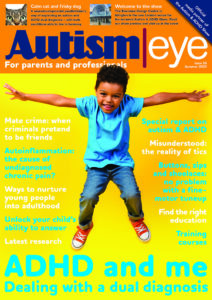Psychotropic medication may increase brain connectivity in children with autism, a new study shows.
Doctors often prescribe psychotropic medication to children with autism to help control their mental state.
The study found that children with autism taking such medication had higher levels of connectivity in the brain’s outer layer, the cortex.

Professor Ralph-Axel Müller: his study found autistic children on psychotropic medication showed different patterns of connectivity in the brain
The researchers at San Diego State University used functional magnetic resonance imaging (fMRI) to measure activity.
Three groups of children
They used three groups of children. One group had autism and took psychotropic medication. Another group had autism and were medication free. The final group comprised ‘typically developing’ children.
The researchers found different patterns of connectivity for the children with autism taking medication compared to both of the other groups.
Psychotropic medication produces over-connectivity
The autistic children taking the psychotropic medication showed over-connectivity compared to the typically developing children for connectedness between different regions of the cortex.
In contrast, the children with autism who were not taking medication showed under-connectivity in the cortex compared with the typically developing children.
While the medication increased connections in the cortex, it did not boost the autistic children’s connectivity when it came to other areas of the brain, the cerebellum and basal ganglia. The cerebellum is at the back of the skull, while the basal ganglia is in the base of the brain.
The autistic children showed clear under-connectivity between the cerebellum and the basal ganglia compared to the typically developing group. This was the case whether or not the children with autism were taking medication.
Effect of medication status
Professor Ralph-Axel Müller is a member of the research team. In an email he said the study “generally suggested that medication status may have an effect on brain connectivity”.
But he said it was not “controlled or specific” enough to say whether it’s better for children with autism to be on medication.
The study involved 49 children and adolescents aged eight to 17 with autism. There were also 50 matched, typically developing (TD) children.
Of the children with autism, 25 (51 per cent) were using psychotropic medications. These included stimulants such as Adderall and Concerta. They also included antidepressants such as Zoloft and Celexa. Other medications were antipsychotics (to control an impaired relationship with reality) such as Risperdal and Abilify, and anxiolytics (to inhibit anxiety) such as Xanax.
The paper was published in Biological Psychiatry: Cognitive Neuroscience and Neuroimaging.
Related:
Published: 13 September 2017















